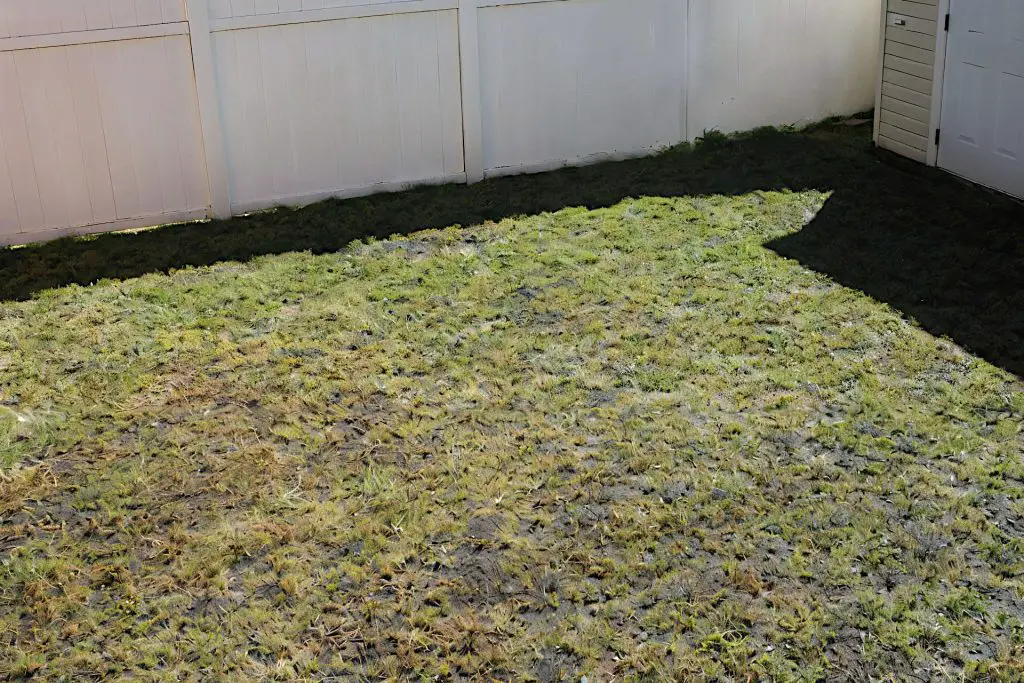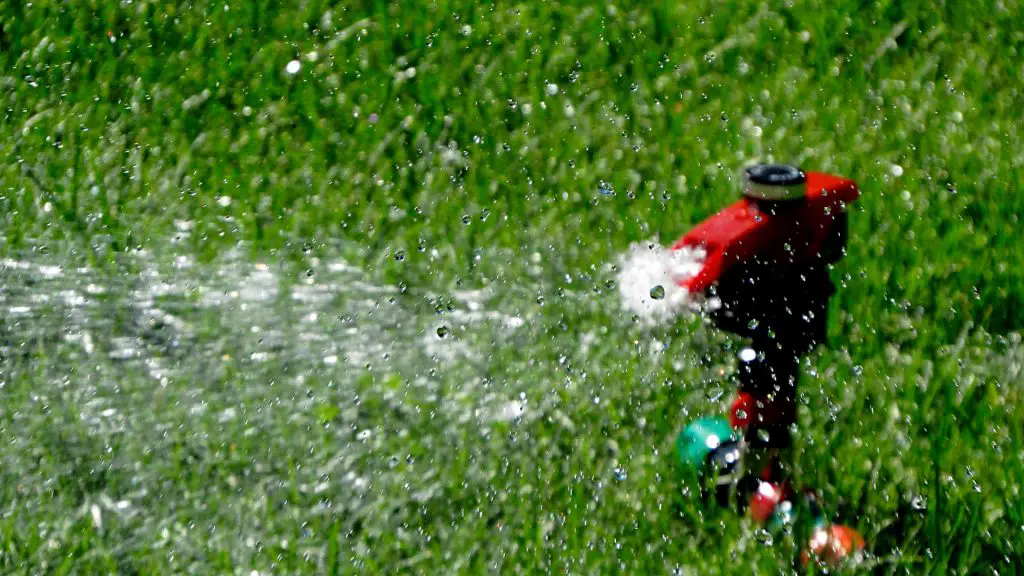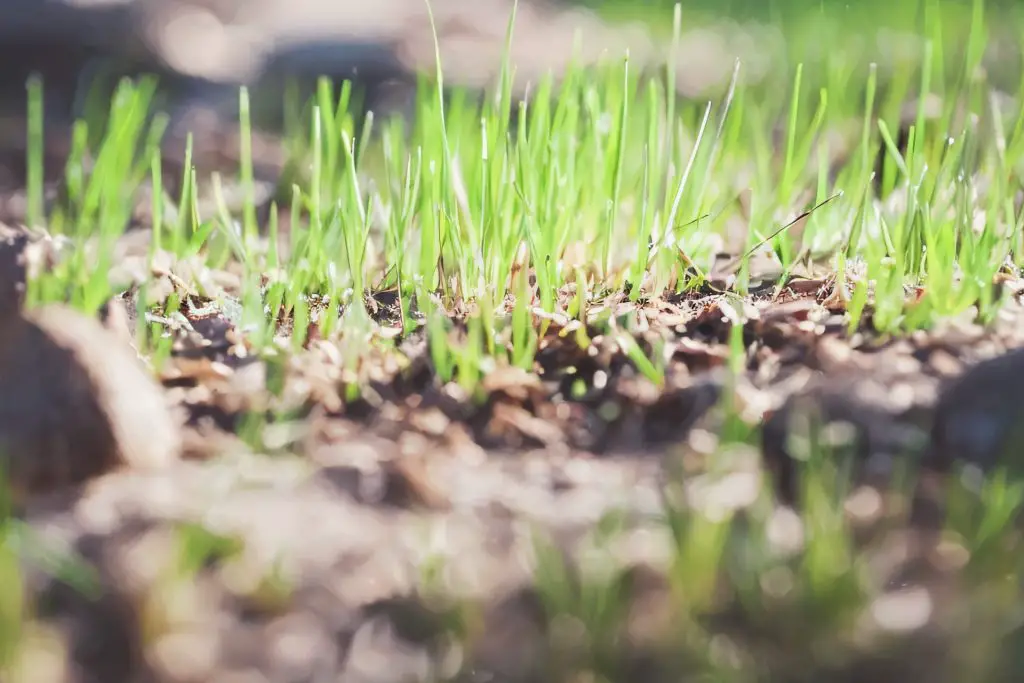How Much Should You Water After Overseeding?
After overseeding, you’ll want to water, however, when and how much should you water after overseeding will depend on a number of factors such as the type of and species of grass you have overseeded with and your local climatic conditions.
Whether you’ve overseeded your lawn or have planted an entirely new lawn, your new grass needs water to thrive. Watering new grass seeds stimulates their growth, and helps them germinate and become established as a lawn. It is important though, to have the correct watering regime as under watering or overwatering can both have detrimental effects on the health of your lawn.
How Often Should You Water After Overseeding?

A common question asked is should I water after putting grass seed down? The short answer is yes, you should water, but initially, you should water very carefully.
Having the correct watering regime after overseeding is an important part of assisting the grass seeds to germinate as well as promoting the development of new grass in the lawn.
Ideally, you should irrigate straight after overseeding but there is a danger that if you water too aggressively you could wash away the grass seed.
Once the seed has germinated you should water your lawn every day or two, but if you’re going to be away for a while, make sure you let the sprinkler run for a few minutes before leaving.
Once you’ve aerated and overseeded your lawn in the fall, you’ll want to follow up with watering. To keep you from guessing what to do next, we’ve laid out some details on how to water your lawn.
Can You Overwater After Overseeding?

It is important that the soil stays moist after overseeding in order that the soil doesn’t dry out too much and the seedlings can germinate. However, if you overwater there are a number of problems that can also ensue.
Overwatering after overseeding is a common problem for homeowners who do not know how to properly prepare their lawns.
Overwatering can cause several different problems. The most destructive is the fact that you can literally drown the grass seed causing it to rot or weaken its roots. If the overseeded area is watered too much you might also find that the new seed can also be washed away causing bare patches to develop.
Another problem that can arise if you water too much is that your grass could actually become too dense. If this happens then it could make it difficult for all the grass to be able to absorb sufficient nutrients from the soil. As a result, the grass could be weakened and become unhealthy.
Watering after overseeding is, therefore, an important part of the lawn care regime you have in place but needs to be carefully monitored and carried out in relation to the weather. A good way to avoid and prevent overwatering is to use a hose nozzle that produces a fine spray. As a rule of thumb, the ground should be moist but not saturated.[1]
How Often Should Grass Seed Be Watered until It Germinates?
There is no hard and fast rule as to the number of times you should water. Much will depend on the grass type and species as well as the weather but the key is to keep the ground moist.
Different species germinate at different seeps under different conditions. Most grasses will germinate between seven to fourteen days but some species can take up to thirty. As a rule of thumb the small and newer the seed the faster the germination.
During the germination stage, you must ensure that the soil not only receives enough water but the correct volume at the appropriate time.
As rain is can be a little unpredictable, you need to be able to water if the weather conditions are overly dry. However, it is also important that although the soils should remain moist is shouldn’t become saturated.
If you find that areas of the ground begin to pool while you water and the water doesn’t immediately dissipate then you are watering too heavily.
You should water your lawn every day or two, but if you’re going to be away for a while, make sure you let the sprinkler run for a few minutes before leaving.
How Much Should You Water Grass Seeds After Germination?

You should usually start to decrease the number of watering after the grass seed has begun to germinate and initial grass shoots can be seen over most of the overseeded area. You should be able to move to water just once a day but remain careful not to soak the ground
Usually, around a couple of weeks after putting down the seed you can again reduce the watering to every second or third day during this third week. Again much will depend upon current climate conditions at the time.
As you move into the fourth week, your grass should only be watered once or twice a week. From that point on, you can move to a regime where you will water the grass as and when it needs it.
What Happens if You Don’t Water After Overseeding?
While watering new grass seeds isn’t absolutely necessary, it will ensure the lawn thrives. Whether you can get away without watering will be controlled by the climate conditions. If you are in a dry arid climate then you would almost certainly need to water. If, on the other hand, you are in a wet temperate climate then you can get away without watering.
The main reason for watering is to keep the soil moist. The seeds will germinate much faster when they can draw moisture from the soil. If the soil is already moist before seeding then you don’t have to water, indeed you shouldn’t if there is a danger of the soil becoming saturated.
Summary: How Much Should You Water After Overseeding
How much should you water after overseeding has so many different variables? The answer, therefore, is to consider what conditions you need to create for the seeds to thrive. In the case of watering, it is keeping the soil moist until they germinate, which in terms of irrigation means watering enough and as often as necessary for this to be the case.
It is important for the grass seeds to germinate fast for the soil to be moist so that they can easily draw water and nutrients from it. This should act as your rule of thumb in terms of your irrigation regime as both underwatering and overwatering can be detrimental to the health of your lawn.
In dry arid climates that could mean that you have to water far more regularly than in wet temperate conditions.
After the grass germinates you can start to reduce the number of times you are watering and a couple of weeks after that you should be in a position to let the grass tell you when it needs watering.
Notes:
[1] Iowa State University of Science and Technology: Establishing a Lawn from Seed
